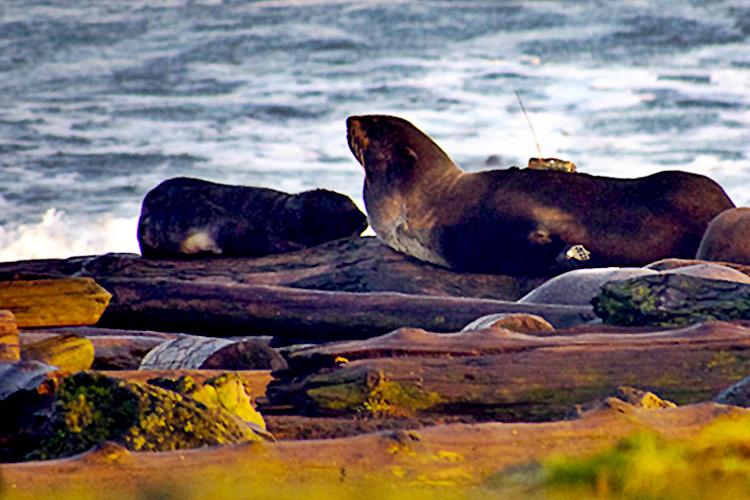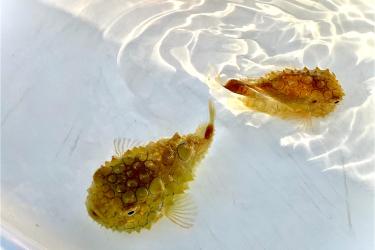
High winds and heavy rain didn't stop the team from searching for instrumented females.
After a very busy couple of weeks, I am happy to report that I am back in Seattle and ready to start the next leg of our 2016 Saildrone mission, data analysis!
We were able to recapture 29 of the 30 instrumented females and remove their tags, resulting in one of our highest instrument recovery rates in years. Eighteen of those females were caught with their pups, giving us the ability to link the females’ foraging behavior and their reproductive success.
I wanted to share with you what our fur seal dive records look like. Below are two females’ dive patterns. They’re good examples of how different dive behavior can be between individuals. The graphs show dive behavior over the same 12 hours window – but on different days. The top plot is for July 28. The second plot is from July 30. Notice how both the number of dives and dive depths differ between these two fur seals.

Dive plots for two female northern fur seals.
The first female was regularly diving more than 70 meters which is about 200 feet. The second female never went past about 65 meters and only went to that depth twice. Yet, the foraging grounds used by these two females were relatively close, just northeast of St. Paul Island. We don’t know why there are such differences but we hope to find out.
The data collected from the Saildrone will be able to tell us more about the fish at these fur seals’ foraging sites. Perhaps we’ll find that where the first seal was feeding the pollock were larger in deeper water.
The data analysis stage will take several months and the process is a collaborative effort. I’ll be analyzing all of the fur seal data and will work with my colleague Alex De Robertis who is examining the fish abundance data. That information was collected from acoustic devices attached to the Saildrone. We’ll merge the data sets to get a clearer picture of fur seals and their pollock prey in the Pribilof Islands.
This field season was incredibly successful overall and it wouldn’t have been possible without the hard work of my field teams in both July and September. Their enthusiasm and commitment, even in some awful weather conditions, made it possible to recover a wealth of data that will be vital for helping us understand fur seal declines.
Meet the Bloggers

Carey Kuhn
Carey Kuhn is an ecologist at the Alaska Fisheries Science Center’s Marine Mammal Laboratory.
Carey joined the Lab’s Alaska Ecosystems program in 2007 after completing her Ph.D. at the University of California Santa Cruz.
Her research focuses on the at-sea behavior of northern fur seals.


